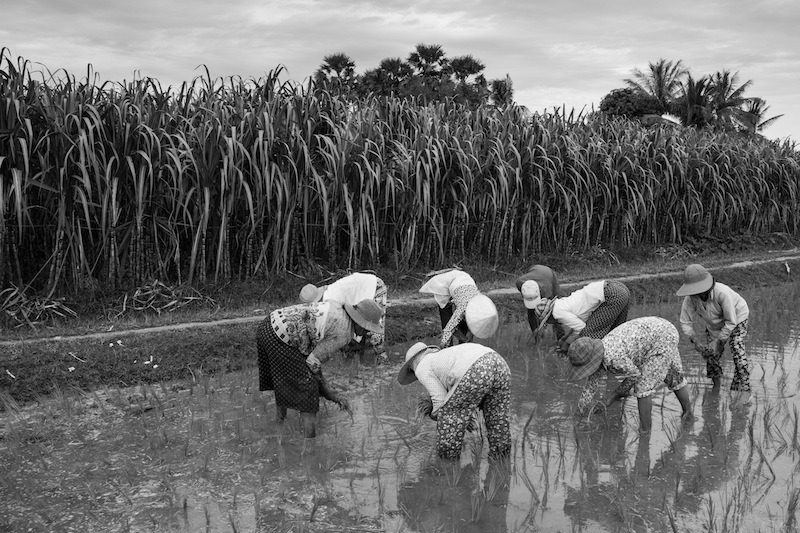By: Dr. Shah Ayaz Siddiqui (Editor-in-Chief-ICN Group)
Today, half of the world’s 800 million starving people are small farmers and workers connected to the agricultural sector.
Suicide rates in farmers are the highest of any occupation. That’s an alarming statistic.If you’ve idealized farming as an easy occupation, it’s not. Farming is characterized by high stress.Financial pressures, livestock disease, poor harvest, climate change, government policies and legislation can devastate farmers.
High stress combined with frustration can lead to depression. In the U.S. the rate of farmer suicides is just under two times that of the general population. In the U.K. one farmer a week commits suicide.
Farmers suicide is a global phenomenon. Outside India, studies in Sri Lanka, USA, Canada, England and Australia have identified farming as a high stress profession that is associated with a higher suicide rate than the general population.This is particularly true among small scale farmers and after periods of economic distress.
Untreated mental illness is unlikely to adequately explain farmer suicides; many Queensland farmers who died by suicide had no recorded signs of a psychiatric condition.
Hundreds of French farmers take their own lives each year. The results are devastating, often leaving a family without its breadwinner, in debt and with a farm to maintain.
The 2001 film Lagaan describes some of the pressures faced by Indian farmers and members of rural communities, and how the British Raj exacerbated those pressures.
In China, farmers are killing themselves daily to protest the government taking over their prime agricultural lands for urbanization.
In France, a farmer dies by suicide every two days. Australia reports one farmer suicides every four days.Canadian farmers have to pay into unemployment insurance but usually don’t qualify for the benefit when they become unemployed.
Depression is mood and behavior that many farmers mislabel, dismiss or ignore. Most of this attitude has to do with lack of education and stigma about depression. Instead of going to a mental health professional or doctor, a farmer will voice his feelings to family or friends.In the U.K. the charity organization YANA (You Are Not Alone) works to help depressed farmers.
Across rural India – where 70 percent of India’s 1.2 billion people live – farmers, they face calamity after rains destroyed at least 18.98 million hectares of crops.India is mainly an agricultural country. Agriculture is the most important occupation for most of the Indian families.
Agricultural investment in India is a big gamble. Farmers usually take out bank loans against land to buy seeds and fertiliser, pay salaries, and acquire irrigation equipment.
Local moneylenders often take the place of banks and boost interest rates year after year, creating a debt-trap for the farmers who rely on crop success – and prayers – for loan repayments.Long droughts, poor yields, and unseasonal rains contribute to the struggles that lead to suicides, which do not absolve the rest of the family from paying back a loan.
Young men refuse to marry into a family under debt because they know they won’t get a dowry, and a girl’s parents would never marry her off to a man whose family is unable to payoff loans.
The expressed reasons in order of importance behind farmer suicides were – debt, alcohol addiction, environment, low produce prices, stress and family responsibilities, apathy, poor irrigation, increased cost of cultivation, private money lenders, use of chemical fertilizers and crop failure.
As much as 79.5% of India’s farmland relies on flooding during monsoon season, so inadequate rainfall can cause droughts, making crop failure more common. In regions that have experienced droughts, crop yields have declined, and food for cattle has become scarcer.
Agricultural regions that have been affected by droughts have subsequently seen their suicide rates increase. For farmers, over 40 per cent of suicides can be attributed to bankruptcy or farming related problems.
Another problem smallholder farmers face when trying to increase productivity is where to get the capital to buy modern agricultural inputs. For instance, in parts of the world where there are no banks or credit unions, it is very difficult for farmers to obtain the capital to buy even fertilizer let alone herbicides pesticides and improved seeds.
Farmers, therefore, sometimes go into debt at exorbitant rates of interest to loan sharks to buy inputs and if crops fail they have no way of paying back their loans.Another critical factor that influences smallholder farmers is that of labour migration.
In many parts of the developing world, people have left small farms in search of better paying jobs in richer parts of the world. In some regards this can help by providing a source of income back to people on the farms. But such changes also make it harder to obtain decent harvests at home because there isn’t labour available.
In India farmer suicides are a regional problem, not a country-wide phenomenon.It’s for the first time that the NCRB has categorised farmers’ suicides in India due to debt or bankruptcy based on the source of loans.




